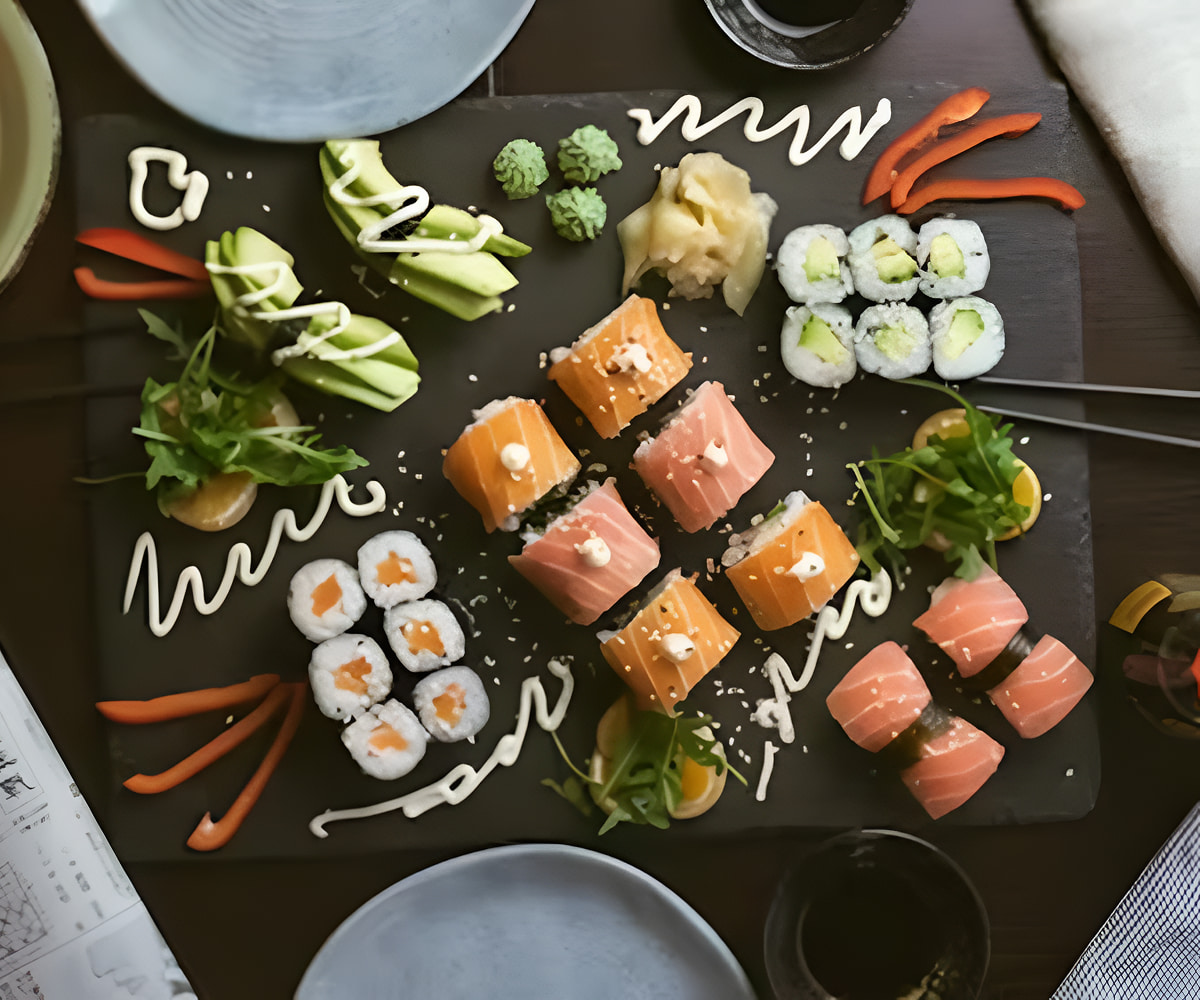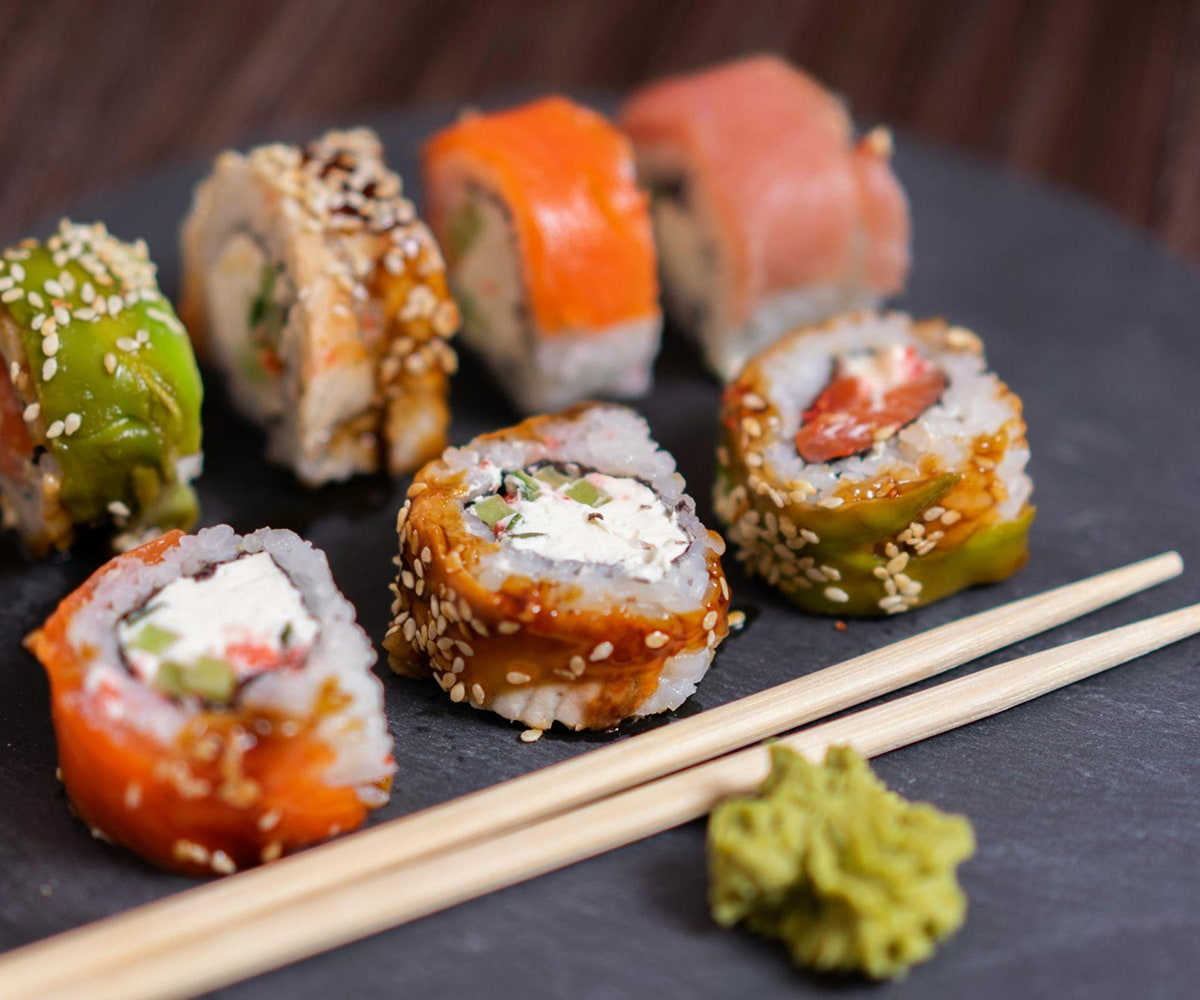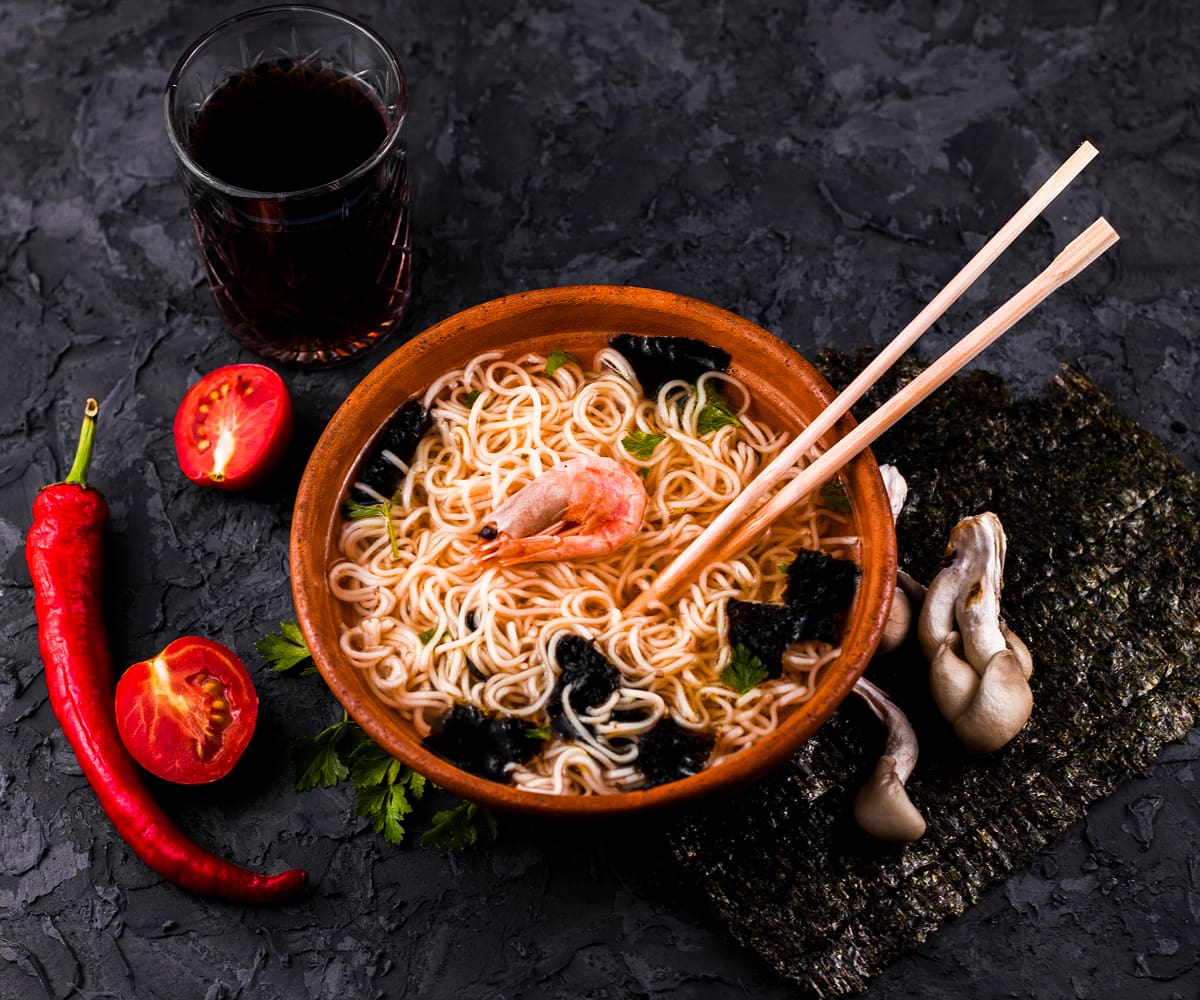Pairing sake with sushi is one of the most rewarding rituals in Japanese dining. At Ram & Roll at Kempinski The Boulevard in Dubai, our approach is simple: let pristine ingredients, careful technique, and well-chosen sake do the talking. As we prepare for our grand opening, we’re excited to share a sommelier-style guide you can use to match different sushi styles—from classic nigiri to bold maki—so every sip and bite feels balanced, expressive, and delicious.
Key Takeaways:
- Match intensity: delicate fish and vegetable rolls sing with light, aromatic sake; richer, fattier fish and sauced rolls thrive with fuller styles.
- Consider sweetness and acidity: dry, crisp sake supports clean flavors; a touch of sweetness can cushion spice and umami.
- Temperature matters: chill aromatic styles; warm robust junmai to deepen umami and texture.
What is sake—and why does it love sushi?
Sake is a fermented rice beverage crafted from polished rice, water, koji (the enzyme-producing mold that converts starch to sugar), and yeast. Unlike grape wine, sake’s polishing rate (how much of the rice grain is milled away) and fermentation choices shape its aroma, texture, and umami. That spectrum—fragrant and featherlight to savory and structured—makes sake unusually versatile with sushi. Both share subtlety, purity, and umami, so you can fine-tune a pairing without overwhelming delicate flavors.
Key sake styles at a glance
- Junmai: Rice-forward, umami-rich, often fuller-bodied. Great slightly warmed or gently chilled with richer fish or soy-accented bites.
- Ginjo / Junmai Ginjo: Polished to around 60%; aromatic with notes that can feel fruity or floral, typically light to medium body, best served chilled.
- Daiginjo / Junmai Daiginjo: Higher polishing (around 50% remaining or less); silky, elegant, and highly aromatic; serve well-chilled.
- Honjozo: A small addition of brewer’s alcohol lifts aroma and body; clean, smooth, and very food friendly served cool or at room temperature.
- Nigori: Lightly filtered, cloudy, and often gently sweet with a creamy texture—handy for spice and crunchy, sauced rolls.
- Sparkling sake: Effervescent, crisp, and palate-cleansing; a lively partner for fried textures or creamy fillings.
How to choose the right sake for the sushi in front of you
Start by matching intensity. Ask: is the bite delicate and clean (e.g., fluke, snapper, cucumber), moderately rich (salmon, yellowtail, avocado), or bold (toro, eel, spicy tuna, tempura rolls)? Then adjust sweetness, acidity, and texture in your sake to echo or balance the sushi’s profile.
Simple framework: balance flavor, fat, and finish
- Delicate fish & vegetable flavors: Choose aromatic, dry, and crisp sake (Ginjo, Junmai Ginjo, light Honjozo). Chill to 7–10°C (45–50°F) to emphasize lift.
- Richer, fattier fish: Medium to full-bodied sake with rounded acidity (Junmai, some Daiginjo with a soft texture). 10–13°C (50–55°F) lets nuance bloom.
- Spicy or sauced rolls: Off-dry or creamy styles (Nigori, plush Junmai) to cushion heat and glaze sweetness. Cool, not icy, preserves aromatics.
Best sake pairings for nigiri
Nigiri is the purest test of balance: seasoned rice, a brush of soy, and pristine fish. Let the fish lead, with sake supporting texture and finish.
- Lean white fish (fluke, sea bream): Junmai Ginjo. Its gentle fruit and clean finish won’t mask delicate minerality.
- Salmon & yellowtail: Soft, chilled Ginjo or a supple Junmai. You get enough body to ride the fish’s richness without overshadowing it.
- Toro (fatty tuna): Rounded Junmai at cool room temperature (12–16°C / 54–61°F). The warmth lengthens umami and meets toro’s buttery mouthfeel.
- Eel (unagi) with sweet glaze: A touch of sweetness helps—consider Nigori or a fruit-cushioned Ginjo to echo the tare.
Planning a full tasting? Browse our evolving menu and ask the team to suggest a three-sake flight that climbs in body from Ginjo to Junmai.
Smart sake choices for maki rolls
Maki often combines multiple textures—crunch, creaminess, spice—so think of sake as a palate “reset” that also complements the headline flavors.
- California-style rolls (crab, avocado): Junmai Ginjo. Aromatic lift highlights sweetness in crab and the buttery note of avocado.
- Spicy tuna or spicy salmon: Nigori or plush Junmai to soften chili heat and sesame depth; the creamy texture mirrors spicy mayo.
- Tempura rolls: Sparkling sake or crisp Honjozo. The bubbles or brisk acidity cut through fried batter for a refreshed palate.
- Vegetable-forward maki (cucumber, asparagus, pickles): Dry Ginjo. Clean lines keep veggies bright and snappy.
If you’re a handroll devotee, our fresh-to-order approach keeps nori crisp and rice at the right warmth. Explore our craft in detail on the handrolls page and consider a chilled Ginjo for the first two rolls, then step up to a textured Junmai for richer fillings.
Sashimi & sake: preserving purity
Sashimi demands clarity. Focus on sake that polishes rather than perfumes the fish.
- White fish sashimi: Ultra-clean Ginjo served cold to 7–9°C (45–48°F).
- Salmon or chutoro: Junmai Ginjo or elegant Daiginjo adds silk without stealing the show.
- Shellfish (scallop, sweet shrimp): Lightly off-dry Ginjo enhances natural sweetness and soft textures.
Keep pours small and cool; warmer temperatures or large pours can blur delicate aromas. For a composed experience that moves beyond sushi, pair sashimi courses with items from our Japanese dinner selection to explore contrast and complement side by side.
Vegetarian sushi pairings that shine
Vegetable rolls reward restraint. Crisp, aromatic sake underscores freshness; a whisper of sweetness offers roundness where needed.
- Avocado & cucumber: Dry Ginjo for lift; its floral snap frames creaminess without heaviness.
- Roasted mushroom or eggplant: Junmai at cool room temp enriches umami and earthiness.
- Pickled vegetables: Bright Honjozo counters acidity and resets the palate between bites.
- Rainbow-style vegetable rolls: Nigori can bring plush texture and gentle sweetness to a colorful, crunchy mix.
Temperature: the stealth ingredient
Temperature can transform a pairing more than you might expect:
- Chilled (7–10°C / 45–50°F): Accentuates aromatics and crisp finishes—ideal for Ginjo, Daiginjo, and sparkling styles with delicate fish.
- Cool (10–13°C / 50–55°F): Softens edges and reveals texture—great for richer nigiri and many Junmai.
- Gently warm (40–50°C / 104–122°F): Amplifies umami and rounds acidity in sturdier Junmai; pair with fatty cuts or sauced bites.
When in doubt, start colder with aromatic styles, then let the glass warm slightly as you taste. That progression often unlocks unexpected harmony.
How we serve sake at Ram & Roll
Our service is designed to heighten the senses. Expect chilled carafes for aromatic bottles and gently warmed ceramics for structured Junmai. We favor traditional ochoko cups for precise sipping and texture awareness, always aligning serving temperature with the dish in front of you. If you’d like to explore beyond sake, our team can also guide you through Japanese teas and zero-proof options—discover more on our Japanese drinks page.
Signature bites and suggested pairings
As a modern Japanese dining destination in Downtown Dubai, we’re curating a focused sushi and handroll selection alongside ramen and robata specialties. Here are illustrative pairing ideas you can use when you visit:
- Spicy Tuna Roll: Nigori or plush Junmai for creaminess and balance.
- Salmon & Avocado Roll: Junmai Ginjo—silky fruit notes mirror salmon’s richness.
- Crispy Tempura Roll: Sparkling sake or brisk Honjozo to slice through crunch.
- Chef’s Sashimi Selection: Start with crisp Ginjo; finish with a soft Junmai for deeper cuts.
Exploring our evolving offerings and pairings is part of the fun—keep an eye on the menu as we approach opening, and feel free to request a guided flight.
Breakfast, lunch, and dinner—sake across the day
One of Ram & Roll’s unique touches in Dubai is a refined Japanese-style breakfast. Think savory-sweet tamagoyaki, seasonal pickles, and perfectly steamed rice. A lightly sparkling or delicately aromatic sake (just a small pour) can be a thoughtful accent, though tea remains an elegant default. Learn more about our approach on the Japanese breakfast page. At midday, sake pairs naturally with our sushi bento or donburi choices; in the evening, explore deeper cuts and warm Junmai with umami-rich plates from our Japanese dinner selection.
Ordering tips: build a pairing like a pro
- Begin light: Start with Ginjo alongside lean fish or vegetable rolls.
- Increase body: Move to Junmai Ginjo or Daiginjo with salmon, yellowtail, or sashimi flights.
- Finish bold: Warm a Junmai for toro, eel, or sauced maki; consider a final palate-cleansing splash of sparkling sake.
Ready to experience the pairings in person? Browse the menu and secure your table via our reservation page—we look forward to welcoming you to our sanctuary at Kempinski The Boulevard.
Frequently asked questions
What’s the best sake for classic nigiri?
Choose a light, dry Ginjo or Junmai Ginjo served well-chilled. These styles keep the focus on fresh fish and perfectly seasoned rice.
How do I pair sake with sashimi?
Keep it clean and precise. Start with an aromatic Ginjo for white fish, then step into a silkier Daiginjo for richer cuts. Small, cool pours preserve nuance.
Which sake works with spicy or sauced maki?
Nigori or a plush, medium-bodied Junmai. A hint of sweetness and creamy texture softens heat and complements sweet-savory glazes.
Can I enjoy sake with breakfast dishes?
In moderation, yes—especially a light, sparkling style with savory-sweet elements like tamagoyaki. Otherwise, Japanese teas are a graceful morning companion. Explore our approach on the Japanese breakfast page.
What if I’m new to sake?
Ask for a mini flight that moves from Ginjo to Junmai. Our team will tailor pours to your chosen sushi, ensuring each pairing feels effortless. To plan ahead, review options on the menu and reserve a tasting via the reservation page.
At Ram & Roll, pairing is about harmony, not rules. With a few anchors—intensity, sweetness, acidity, and temperature—you can match sake to any sushi style and enjoy the kind of balanced, sensory experience that defines modern Japanese cuisine in Dubai.






